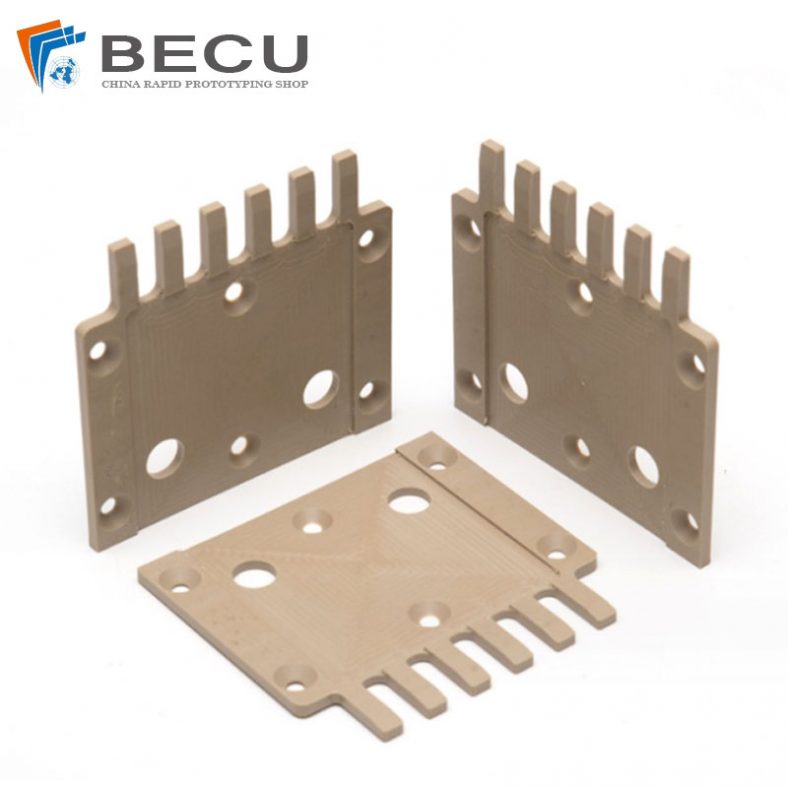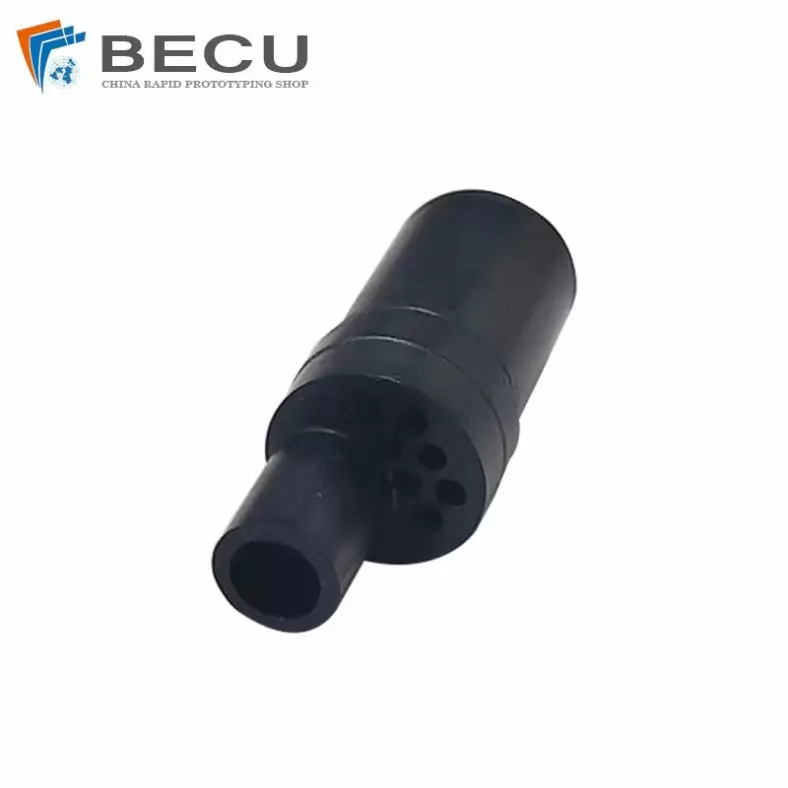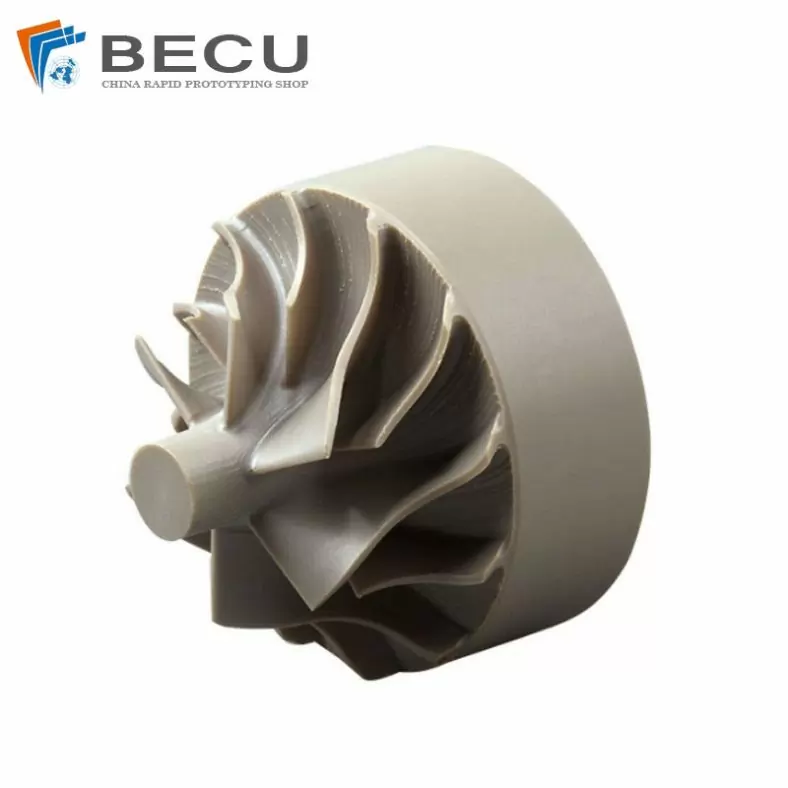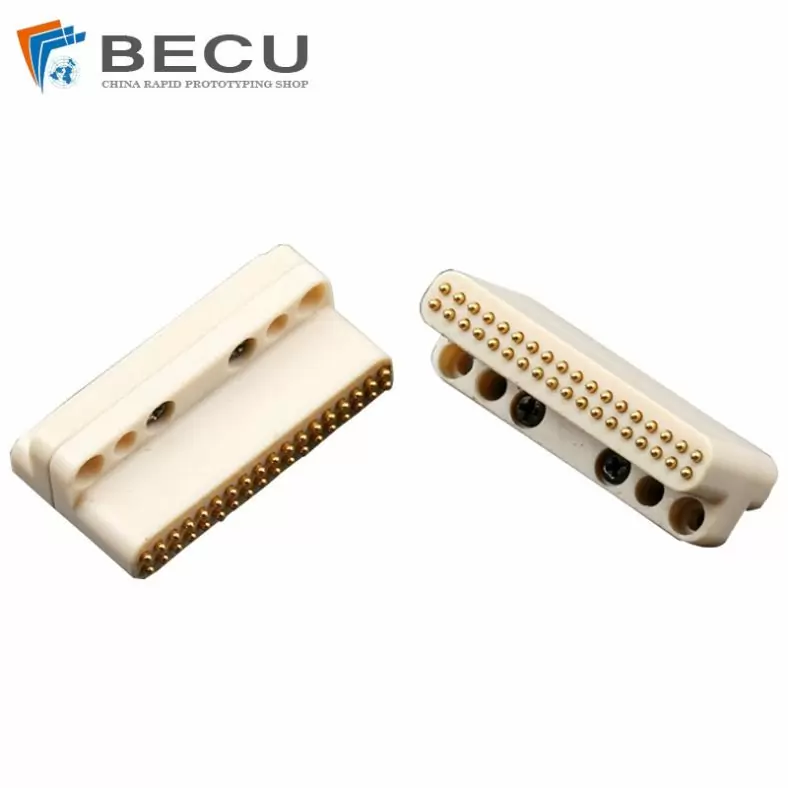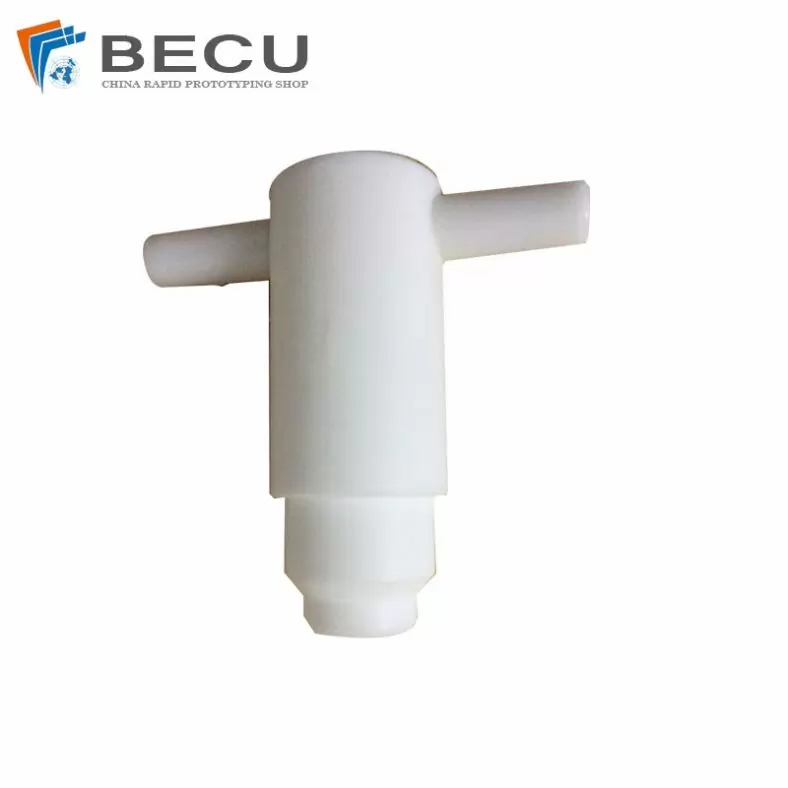The global demand for high-performance polymers has increased significantly in recent years, driven by the need for materials that can withstand extreme temperatures, corrosive environments, and high mechanical stress. PEEK and Teflon are two prominent materials that have gained widespread recognition for their unique properties and versatility in a multitude of applications. Comparing PEEK (Polyether Ether Ketone) and Teflon (Polytetrafluoroethylene) is crucial for understanding the strengths and weaknesses of these two popular materials in various industrial and commercial applications. While both materials have unique properties, specifications, and applications, they cater to different needs and scenarios. In this comprehensive article, we will delve deep into the differences between PEEK and Teflon, analyzing their chemical properties, mechanical specifications, price differentials, and diverse applications across industries.

What is PEEK Plastic Material?
PEEK, a semi-crystalline thermoplastic, belongs to the family of high-performance polymers known for their exceptional mechanical, thermal, and chemical resistance properties.
It is widely regarded for its robustness and ability to maintain its structural integrity even under the most challenging conditions. Let’s delve into the specific properties and specifications that make PEEK a unique material in various applications.
PEEK Parts Case Studies
Properties of PEEK
- Mechanical Strength: PEEK exhibits remarkable mechanical strength, with a tensile strength comparable to that of some metals. Its high strength-to-weight ratio makes it an ideal choice for applications where structural integrity is critical.
- Thermal Stability: PEEK demonstrates excellent thermal stability, allowing it to withstand continuous operating temperatures of up to 260°C without significant degradation. This property makes it suitable for use in high-temperature environments such as aerospace and automotive applications.
- Chemical Resistance: PEEK is highly resistant to a wide range of chemicals, including acids, bases, and organic solvents. This resistance enables its use in industries where exposure to corrosive substances is common, such as chemical processing and oil and gas.
- Wear and Abrasion Resistance: PEEK’s exceptional wear and abrasion resistance make it a preferred material for applications that involve friction and high-wear environments, such as bearings, seals, and piston parts in machinery.
- Dimensional Stability: PEEK maintains its dimensional stability even under fluctuating temperatures and varying environmental conditions, making it suitable for precision engineering applications that demand high accuracy and consistency.
Specifications of PEEK
- Melt Flow Rate (MFR): PEEK is available in various MFR grades, ranging from low-flow to high-flow grades, catering to different processing requirements such as injection molding, extrusion, and 3D Printing.
- Crystallinity: The crystallinity of PEEK can vary depending on the peek cnc machining and other manufacturing process and application requirements. High crystallinity grades offer improved mechanical properties, while lower crystallinity grades provide better processability.
- Glass Transition Temperature (Tg): PEEK has a high glass transition temperature, typically ranging from 143°C to 150°C, ensuring its structural integrity and dimensional stability under elevated temperatures.
Price Range of PEEK
PEEK is relatively more expensive compared to conventional polymers due to its high-performance characteristics and complex peek manufacturing processes. The price of PEEK can vary depending on factors such as grade, form, and quantity purchased. Generally, the price of PEEK resin ranges from $60 to $150 per kilogram, making it a premium choice for applications that require superior mechanical and chemical properties.
Applications of PEEK
- Aerospace Industry: PEEK is extensively used in the aerospace sector for manufacturing lightweight components that require high strength, thermal stability, and resistance to chemicals and abrasion. It finds applications in aircraft structures, engine components, and interior parts.
- Medical Devices: PEEK’s biocompatibility, sterilizability, and radiolucency make it an ideal material for medical implants, surgical instruments, and devices used in diagnostic equipment such as MRI machines.
- Oil and Gas Sector: PEEK is employed in oil and gas applications due to its resistance to aggressive chemicals and high-pressure environments. It finds use in downhole equipment, seals, and components for drilling and production operations.
- Automotive Industry: PEEK is utilized in the automotive sector for manufacturing components that require high temperature and chemical resistance, such as fuel system components, electrical connectors, and sensors.
- Industrial Manufacturing: PEEK is employed in various industrial applications, including manufacturing equipment, sealing materials, and parts for chemical processing equipment, owing to its exceptional mechanical and chemical properties.
What is Teflon Plastic Material?
Teflon, a fluoropolymer, is renowned for its non-stick and low-friction properties, making it a preferred material for applications where high temperature, chemical resistance, and non-stick characteristics are crucial. Its unique combination of properties has enabled it to find applications in diverse industries, ranging from cookware to industrial applications where its non-stick and anti-corrosive properties are highly beneficial.
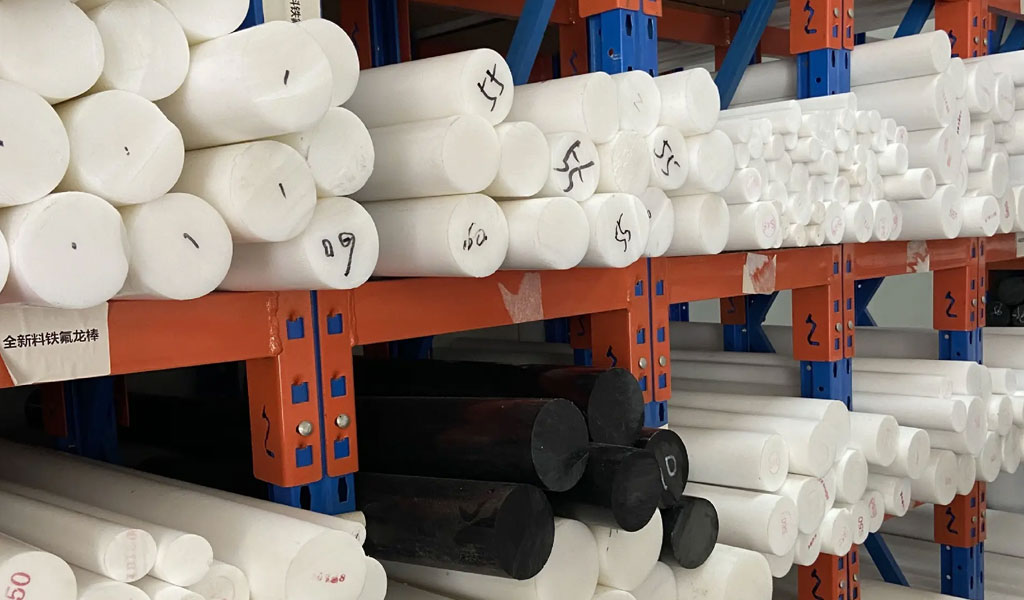
Teflon Parts Case Studies
Properties of Teflon
- Non-Stick Nature: Teflon exhibits a non-stick characteristic, which prevents materials from adhering to its surface. This property finds extensive use in the cookware industry, where it is used as a coating on pans and pots to prevent food from sticking during cooking.
- Chemical Inertness: Teflon is highly chemically inert, making it resistant to a wide range of chemicals and solvents. This property is beneficial in industries where corrosion resistance is critical, such as chemical processing, semiconductor manufacturing, and pharmaceutical production.
- Low Friction Coefficient: Teflon’s low friction coefficient reduces the wear and tear of components, making it suitable for applications where smooth and consistent movement is required. It finds use in bearings, slide plates, and components in the automotive and industrial sectors.
- High Temperature Resistance: Teflon can withstand high temperatures up to 260°C, making it suitable for applications that involve exposure to elevated temperatures, such as electrical insulation, gaskets, and seals in various industries.
- Electrical Insulation Properties: Teflon exhibits excellent electrical insulation properties, making it an ideal material for insulation applications in electrical and electronics manufacturing, including cables, wires, and connectors.
Specifications of Teflon
- Coefficient of Friction: Teflon has a low coefficient of friction, typically ranging from 0.05 to 0.20, depending on the specific grade and application requirements. This specification determines its suitability for various sliding and bearing applications.
- Dielectric Strength: Teflon demonstrates a high dielectric strength, which is essential for its use in electrical insulation applications. The dielectric strength typically ranges from 30 to 60 kV/mm, depending on the specific grade and form of Teflon.
- Water Absorption: Teflon has minimal water absorption, with most grades exhibiting water absorption levels below 0.01%. This property ensures its dimensional stability and electrical performance, even in humid environments.
Price Range of Teflon
Teflon is relatively cost-effective compared to high-performance polymers like PEEK, primarily due to its widespread availability and simple manufacturing processes. The price of Teflon varies based on its form, grade, and quantity purchased. Typically, Teflon resin prices range from $15 to $30 per kilogram, making it an economical choice for various applications.
Applications of Teflon
- Cookware and Bakeware: Teflon-coated cookware machining and bakeware are well-known for their non-stick properties, allowing for easy cooking and cleaning. They are widely used in domestic kitchens and commercial food preparation settings.
- Chemical Processing: Teflon’s chemical resistance makes it an excellent choice for manufacturing equipment used in the chemical industry, such as pumps, valves, and gaskets.
- Electrical and Electronics: Teflon is used as an insulating material for wiring, cables, and connectors due to its electrical insulation properties. It is also employed in printed circuit boards (PCBs) and electronic components.
- Automotive Industry: Teflon coatings are applied to various automotive parts to reduce friction and wear, enhancing the lifespan and performance of components like bearings and seals.
- Aerospace Industry: Teflon is used in aerospace applications for manufacturing components such as seals and gaskets due to its low-friction and anti-corrosion properties.
PEEK vs. Teflon Properties Comparison
The unique properties of PEEK and Teflon/PTFE determine their suitability for particular industrial and manufacturing uses.
| Property | PEEK (Polyether Ether Ketone) | Teflon (Polytetrafluoroethylene) |
|---|---|---|
| Chemical Structure | Aromatic semi-crystalline polymer | Fluoropolymer with tetrafluoroethylene units |
| Mechanical Strength | High tensile strength, excellent stiffness | Low mechanical strength, low friction |
| Thermal Stability | High glass transition temperature (Tg), can withstand up to 260°C | High Tg, can withstand up to 260°C |
| Chemical Resistance | Exceptional resistance to a wide range of chemicals, including acids, bases, and solvents | Highly chemically inert, resistant to various chemicals and solvents |
| Electrical Properties | Good electrical insulation properties | Excellent electrical insulator |
| Coefficient of Friction | Moderate friction coefficient | Low friction coefficient, non-stick properties |
| Price Range | Relatively expensive, typically $60 – $150 per kilogram | More cost-effective, typically $15 – $30 per kilogram |
| Applications | Aerospace, medical devices, industrial equipment | Cookware, chemical processing, electrical insulation |
| Key Advantages | Excellent mechanical properties, thermal stability, and chemical resistance | Non-stick properties, low friction, chemical resistance |
| Key Disadvantages | Higher cost, may not be the best choice for very low-friction applications | Lower mechanical strength, not suitable for high-stress applications |
| Common Industry Uses | Aerospace, medical devices, automotive, industrial manufacturing | Cookware, chemical processing, electrical and electronics, automotive (coatings) |
PEEK vs. Teflon Specifications Comparison
Several key specifications also distinguish PEEK and Teflon plastics:
PEEK (Polyether Ether Ketone)
| Specification | Value/Range | Notes |
|---|---|---|
| Chemical Formula | (C14H10O3)n | Repeating units of ether and ketone groups |
| Mechanical Properties | High tensile strength, stiffness | Suitable for high-stress applications |
| Thermal Stability | Tg: 143-150°C (glass transition temperature) | Can withstand continuous temperatures up to 260°C |
| Chemical Resistance | Resistant to acids, bases, organic solvents | Excellent resistance to a wide range of chemicals |
| Electrical Properties | Good electrical insulation | Suitable for electrical applications |
| Coefficient of Friction | Varies by grade, typically moderate | Depending on crystallinity, can be adjusted for friction control |
| Melt Flow Rate (MFR) | Available in various grades: low to high MFR | Tailored for different processing methods |
| Crystallinity | Variable based on grade | High crystallinity for improved mechanical properties |
| Water Absorption | Low (<0.5%) | Minimal water absorption |
| Price Range | $60 – $150 per kilogram | Premium material due to high-performance properties |
| Key Advantages | Excellent mechanical properties, chemical resistance, thermal stability | Suited for high-stress and high-temperature applications |
| Key Disadvantages | Higher cost, may not be optimal for very low-friction applications | Depending on the grade, processing can be challenging |
Teflon (Polytetrafluoroethylene)
| Specification | Value/Range | Notes |
|---|---|---|
| Chemical Formula | (C2F4)n | Repeating units of tetrafluoroethylene |
| Mechanical Properties | Low mechanical strength, low friction | Suitable for low-friction applications |
| Thermal Stability | Tg: Approximately 327°C | Can withstand continuous temperatures up to 260°C |
| Chemical Resistance | Highly chemically inert, resistant to various chemicals and solvents | Excellent corrosion resistance |
| Electrical Properties | Excellent electrical insulator | Ideal for high-voltage and high-frequency applications |
| Coefficient of Friction | Low friction coefficient, non-stick properties | Provides excellent non-stick and low-friction properties |
| Dielectric Strength | Typically 30-60 kV/mm | Excellent dielectric strength for electrical insulation |
| Water Absorption | Very low (<0.01%) | Minimal water absorption |
| Price Range | $15 – $30 per kilogram | Economical material for various applications |
| Key Advantages | Non-stick properties, low friction, chemical resistance | Ideal for applications requiring low friction and chemical resistance |
| Key Disadvantages | Low mechanical strength, not suitable for high-stress applications | Limited in applications with high mechanical demands |
PEEK vs. Teflon Properties and Specifications Comparison
Here is a table comparing the properties and specifications of PEEK and PTFE:
| Property/Specification | PEEK (Polyether Ether Ketone) | Teflon (Polytetrafluoroethylene) |
|---|---|---|
| Chemical Formula | (C14H10O3)n | (C2F4)n |
| Mechanical Strength | High tensile strength, excellent stiffness | Low mechanical strength, low friction |
| Thermal Stability | Tg: 143-150°C (glass transition temperature), can withstand up to 260°C | Tg: Approximately 327°C, can withstand up to 260°C |
| Chemical Resistance | Resistant to acids, bases, organic solvents, excellent chemical resistance | Highly chemically inert, excellent chemical resistance |
| Electrical Properties | Good electrical insulation properties | Excellent electrical insulator |
| Coefficient of Friction | Varies by grade, typically moderate, can be adjusted for friction control | Low friction coefficient, non-stick properties |
| Melt Flow Rate (MFR) | Available in various grades: low to high MFR, tailored for different processing methods | – |
| Crystallinity | Variable based on grade, high crystallinity for improved mechanical properties | – |
| Dielectric Strength | – | Typically 30-60 kV/mm (for electrical insulation) |
| Water Absorption | Low (<0.5%) | Very low (<0.01%) |
| Price Range | $60 – $150 per kilogram | $15 – $30 per kilogram |
| Key Advantages | Excellent mechanical properties, chemical resistance, thermal stability | Non-stick properties, low friction, chemical resistance |
| Key Disadvantages | Higher cost, may not be optimal for very low-friction applications | Low mechanical strength, not suitable for high-stress applications |
| Common Industry Uses | Aerospace, medical devices, automotive, industrial manufacturing | Cookware, chemical processing, electrical and electronics, automotive (coatings) |
PEEK vs. Teflon Cost Comparison
The cost of PEEK (Polyether Ether Ketone) and PTFE (Polytetrafluoroethylene), commonly known as Teflon, varies based on several factors including grade, form, quantity, and supplier. Below is a general cost comparison for these two materials:
The Cost Of PEEK (Polyether Ether Ketone):
- PEEK is a high-performance engineering polymer with a higher cost compared to many other plastics.
- The price of PEEK resin typically ranges from $60 to $150 per kilogram.
- The cost can vary further depending on factors like the grade, form (e.g., pellets, sheets, rods), and the quantity purchased.
- Custom or specialty formulations may be more expensive.
The Cost Of Teflon (Polytetrafluoroethylene):
- PTFE is generally more cost-effective compared to high-performance polymers like PEEK.
- The price of PTFE resin typically ranges from $15 to $30 per kilogram.
- The cost of PTFE can also vary based on factors such as the form (e.g., sheets, rods, powder) and the quantity ordered.
- Standard PTFE grades are readily available and competitively priced.
PEEK is considered a premium material and tends to be more expensive than PTFE. PTFE, on the other hand, is known for its cost-effectiveness and is widely used in various applications due to its affordability. When selecting between PEEK and PTFE, it’s important to consider the specific requirements of your project, as well as budget constraints, in order to make an informed choice based on cost-effectiveness and the desired material properties.
In Conclusion
PEEK and Teflon are two distinct high-performance polymers with unique properties, specifications, price points, and applications. PEEK stands out for its exceptional mechanical strength, thermal stability, and resistance to chemicals, making it a top choice for demanding applications in industries such as aerospace, medical devices, and industrial manufacturing. On the other hand, Teflon is renowned for its non-stick properties, low friction, and chemical resistance, making it a cost-effective option for applications in cookware, chemical processing, and electrical insulation.
The selection between PEEK and Teflon depends on the specific requirements of the application. It is essential to consider factors such as temperature, mechanical stress, chemical exposure, and budget constraints when choosing between these two materials. Both PEEK and Teflon have made significant contributions to various industries, and their versatility continues to drive innovation and improvements in diverse sectors.
Ultimately, the decision between PEEK and Teflon should be based on a thorough understanding of the materials, their properties, and the specific demands of the application at hand. With this knowledge, manufacturers and engineers can make informed choices that lead to optimal performance and cost-effectiveness in their respective fields.

